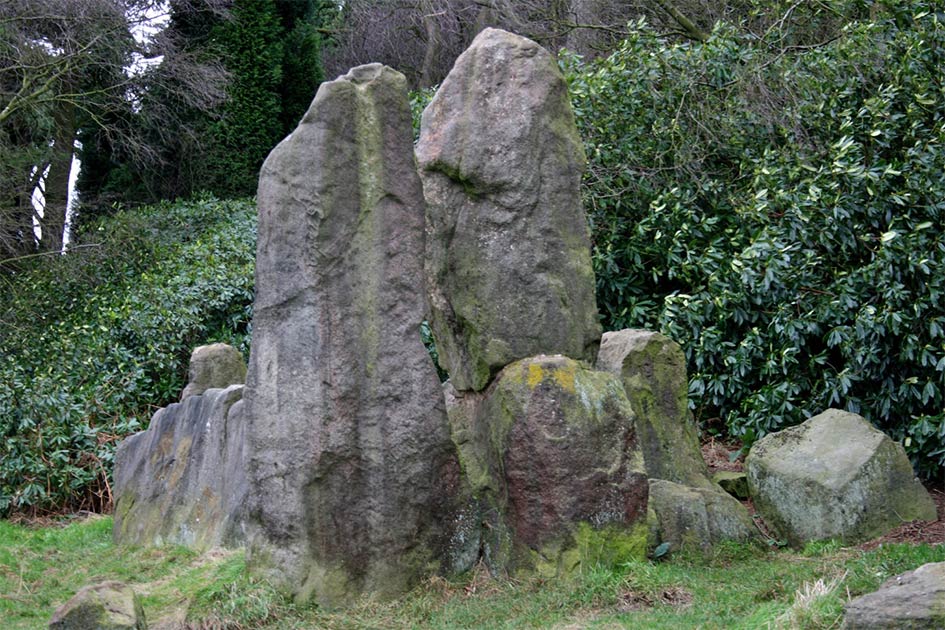Unveiling the Bridestones Cairn of Cheshire
The British landscape is dotted with the remains of its Stone Age past. We are all familiar with Stonehenge, one of the most famous prehistoric monuments in the world, but few people are familiar with the Bridestones. This Neolithic structure was once an impressive monument as remarkable as Stonehenge until it was looted in the modern era. These stones, however, are still of great significance.
The Mysterious History of the Bridestones, Britain
The monument dates to the Neolithic period (3500-2500 BC). The last stage of the Stone Age is an important period in the history of Britain as it was the era when the first farmers began to settle in Britain and the first large-scale settlements were established.
The motivation behind the formation of the Bridestones monument is unknown. The structure is remarkably similar to other cairns and monumental landscapes elsewhere in Northern Europe. It must have had immense religious, social, and political importance in the Stone Age and was likely used as a burial site. In the 1930s, archaeologists found evidence of cremations near the barrow.
The monument was preserved for millennia as a result of local people’s regard for the Bridestones. The etymology of the name may reveal more about the stones as it could be a derivation of Brigantia, a Celtic goddess who was still worshipped in Late Antiquity. There is speculation that the name comes from the old English word for birds ( briddes), because of the shape of some ornamental stones that once stood at the site. There are also many legends about the site. One states that a young couple were murdered and buried beneath the stones. Another story tells of a wizard who practiced magic there.
- Megalithic Examination Explains Why Stonehenge was Built on Salisbury Plain
- Two of Europe’s Biggest Cairns are About to Be Buried in Trash
- Engravings, Passageways, and Intriguing Stone Monuments: The Astronomical Temples of Loughcrew

Brigantia, patron goddess of what is now northern England (jozefklopacka / Adobe Stock)
A report on the monument was written in the work Mona Antiqua Restaurata (1766) and at the time the site was much larger. Several hundred tons of stone were taken away to be used in the construction of a turnpike road and private dwellings, while others were removed for use in an ornamental garden in Tunstall Park. Today, the location is a national monument protected by the British government.
The Modern Remains of the Bridestones
The National Monument is in Cheshire in an area of great natural beauty. Based on the description from the 18 th century, we have a good idea of what it originally looked like.
The monument consisted of a chamber measuring 19.6 x 9 feet (6m x 2.7m) constructed of large stone slabs set on their sided and divided into two by a cross slab. To the south of the chamber, a portal stone stood 9 feet (3m) high and to the north was a portal stone half the height. The forecourt was surrounded by six stones in semi-circular form. Two more missing stones possibly completed the circle. The long cairn covering the chamber was recorded in 1764 as being 360 feet long x 36 feet wide (110m x 11m). Sadly, this was taken away to build a road in the 1760s. A second chamber in the centre of the mound was recorded as measuring 2 ft square and 3.2 ft high (2.2m square x 1m high). A third chamber was noticed in 1766 and a plan of the monument from that year shows four portal stones - two to the north and two to the south of the chamber's entrance. A further two stones stood within the circle and two stood outside the circle to the east.

Magnificent view of the countryside from Bosley Cloud (Photo by Parkins M, Ancient Origins staff writer)
Today, there is extraordinarily little left of what was once an impressive series of monuments and it is much smaller that it was 200 years ago. Much of what remains now has been reconstructed by experts.
Visiting the Bridestones in Cheshire, England
The monuments are near the Cheshire town of Congleton on the western flank of a hill called or Bosley Cloud or simply, The Cloud. There is limited public transport to this rural area. The monument can be easily accessed, and it is possible to enter the remains of the chamber, but the site is unstaffed and there is no information about the monument available.
This site should not be confused with another Bridestones in Yorkshire, in Northern England, which is a unique geological formation.
Top image: The Bridestones, several large stones Source: Peel, M / CC BY-SA 4.0
By Ed Whelan
References
Edwards, R. (2007). The Cheshire historic landscape characterisation. Cheshire County Council and English Heritage.
Available at: www.cheshirearchaeology.org.uk/wp-content/uploads/2013/06/CheshireHLCFin...
Higham, N. J. (1993). The origins of Cheshire. Manchester University Press
Stephens, W. B. (Ed.). (1970). History of Congleton: Published to Celebrate the 700th Anniversary of the Granting of the Charter to the Town. Manchester University Press

















